Nannylevel wardrobe storage homework: From a mess to a compact and tidy one that is not easy to mess up, it only takes these 3 steps
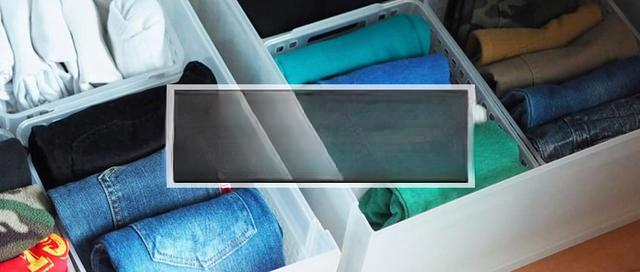
"Wardrobe storage" is a problem that is both simple and difficult.
It is simple in that you don’t need a lot of effort to put it in a neat and compact state, and it will not easily fall apart or bounce back later, and it is almost a once-and-for-all solution.
The difficulty lies in that if you do not organize your views correctly at the beginning, do not have the right order of operations, do not think and examine your own life, but blindly follow the practices of others, you will find that no matter what you do, you will eventually return to the messy starting point.
If there are many people and a small space, and you have little time and energy, and you still want to tidy up the messy wardrobe, then "the overall situation" and "the correct order of operations" are very important.
This "wardrobe storage" homework will take a second bedroom wardrobe that I organized from scratch some time ago as an example. I will tell you my thoughts and operations throughout the process, as well as the pitfalls I encountered and what issues need special attention.
Let me show you how to "cloud store" your wardrobe. Please don't blink and look carefully.
1. You must organize before storing!
Many friends tend to focus on micro issues rather than macro issues when doing storage and various housework. For example, when many people talk about "wardrobe storage", the question they want to know most is "how to fold clothes?"
In fact, if you can only fold your clothes neatly, but don't know or do other things, even if you fold them, they will soon become messy. So let's put these specific micro problems aside for now.
The correct order of organizing and storing is actually to organize first and then store . What is the organizing method?
First, take out all the clothes in your closet that you need to organize (note that it is all, don’t miss any corner), and separate them according to what you need and what you don’t need.
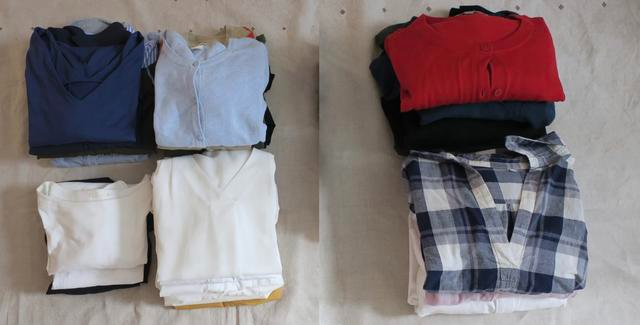
There are too many clothes and I don’t know where to start. I can’t tell which ones I don’t need.
Then separate them by user first, and then sort them out according to season (spring/summer/autumn/winter) and clothing category (such as shirts, T-shirts, trousers, dresses, etc.). In the process of sorting out, you will naturally be able to distinguish which clothes are no longer needed.
(For more information about clothes decluttering, if you are interested, you can check out this Weibo post:
https://weitoutiao./ugc/share/thread/1664477500366860/?app=&target_app=13)
Pack up clothes you no longer need and give them away, donate them, or even exchange them for discount coupons at H&M.
After the clothes have been straightened out, they can be gradually classified according to user, season, type of clothing, and frequency of use, and placed separately. This is not only an "operational" organization of the clothes, but also a "psychological" organization for you. At this time, you can more clearly re-examine the number of clothes you own, your dressing habits, and preferences, which provides a reference idea for your future clothing purchases and storage plans.
For example, this pile of scattered clothes is all mine, so I will skip the step of classifying by "user" and first divide it into two piles according to the two major seasons of spring and summer and autumn and winter, and then classify them according to the types of clothes:
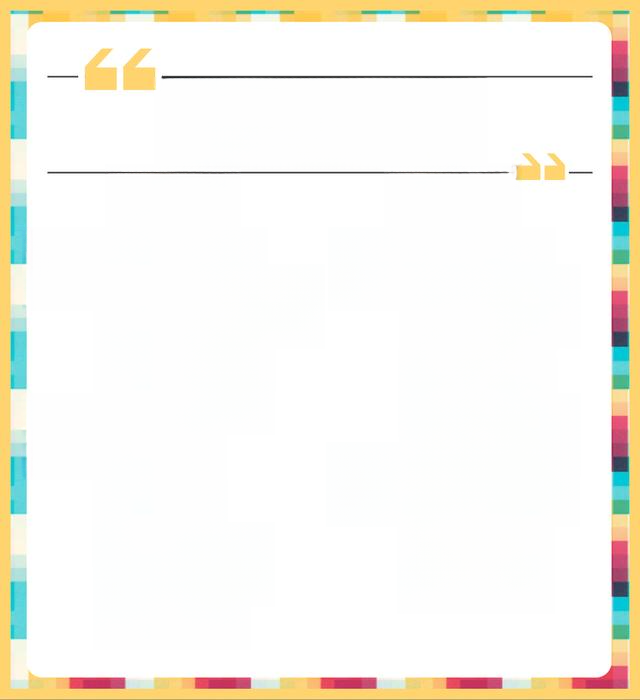
This is just a rough classification of some clothes, which is definitely not complete. You don't have to follow this according to your own situation.
After categorizing, finally arrange them according to frequency of use to prepare for the next stage of storage.
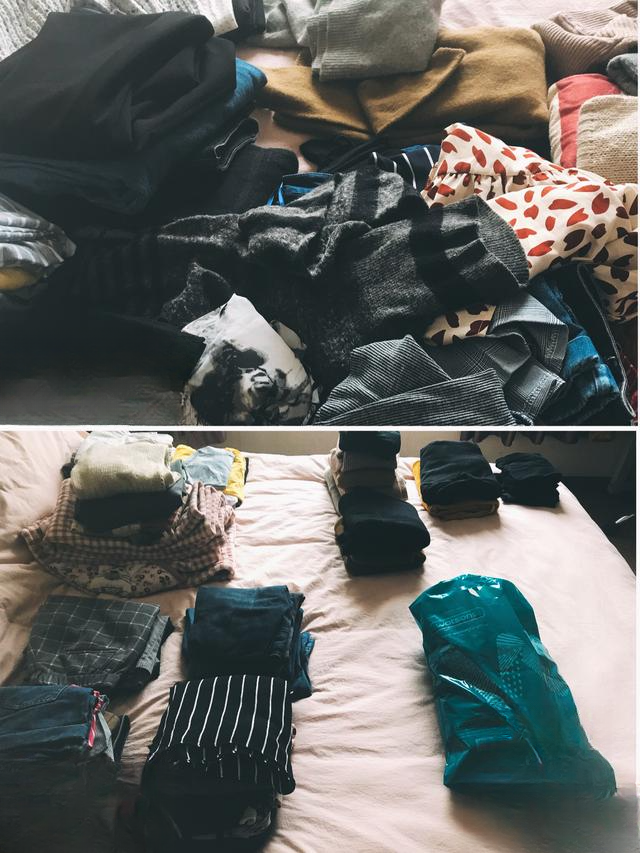
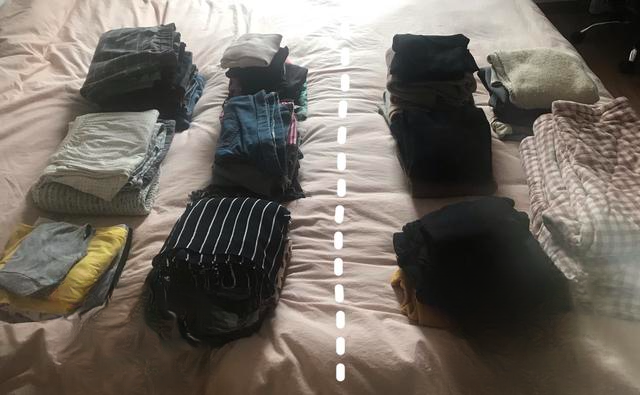
At this step, the organization before storage is basically completed.
The next step is the storage part.
2. Determination of storage space and storage tools
Don’t buy storage tools right away when it comes to storage.
Observe the materials of the clothes that have been sorted above. Some clothes need to be stacked, while some clothes need to be hung because they are wrinkle-prone and too soft. For hanging storage, use the curved non-slip hangers that I mentioned in my previous Weibo post. Arrange and hang them in the hanging area of the closet according to certain rules. (I won’t go into details here. If you have any questions about hanging storage, please raise them in the comment section)
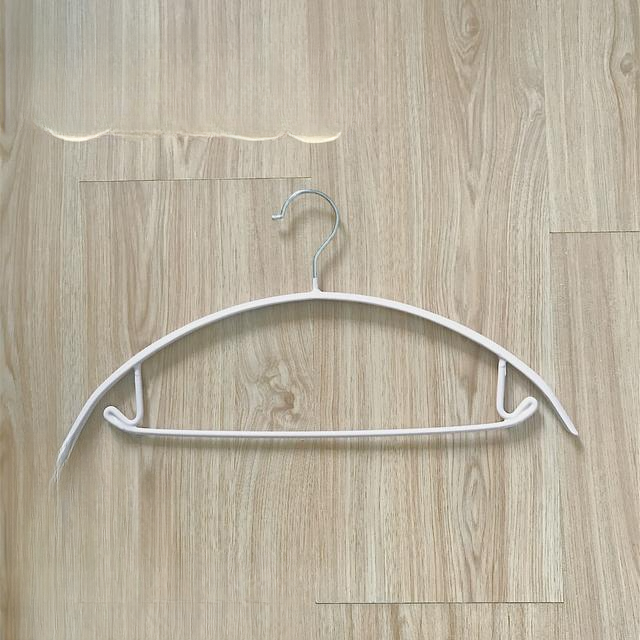
For the remaining clothes that need to be stacked, arrange them in specific storage locations and spaces in the closet according to their frequency of use and who will use them. Finally, select suitable storage tools based on the situation of the space.
Let’s take my wardrobe as an example. The clothes arranged on it, except for the dresses that need to be hung because of their soft texture, the rest are folded and stored. I plan to put them in the partition area of the second bedroom wardrobe:
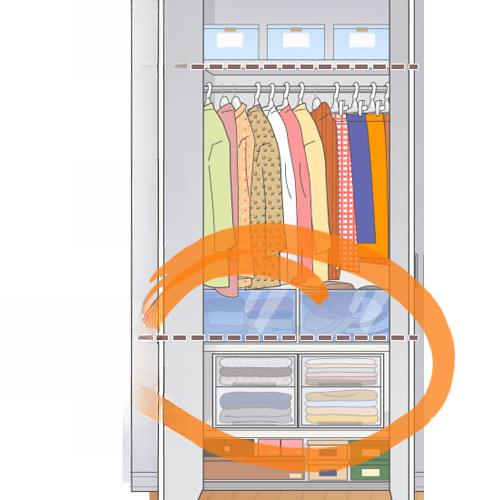
Given this location and the types of clothes I store, I ultimately decided on the most appropriate storage tool: wardrobe storage drawers .
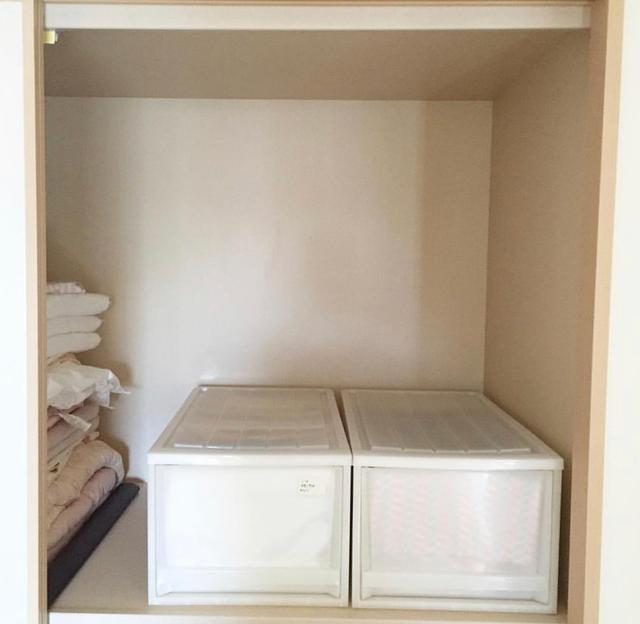
Buy it right away? Of course not.
Based on other people's storage cases and my previous storage experience, I decided to place these stacked clothes upright in the wardrobe storage drawers . The advantages of this placement are: easy to distinguish, easy to take, neat, and not easy to be messed up.
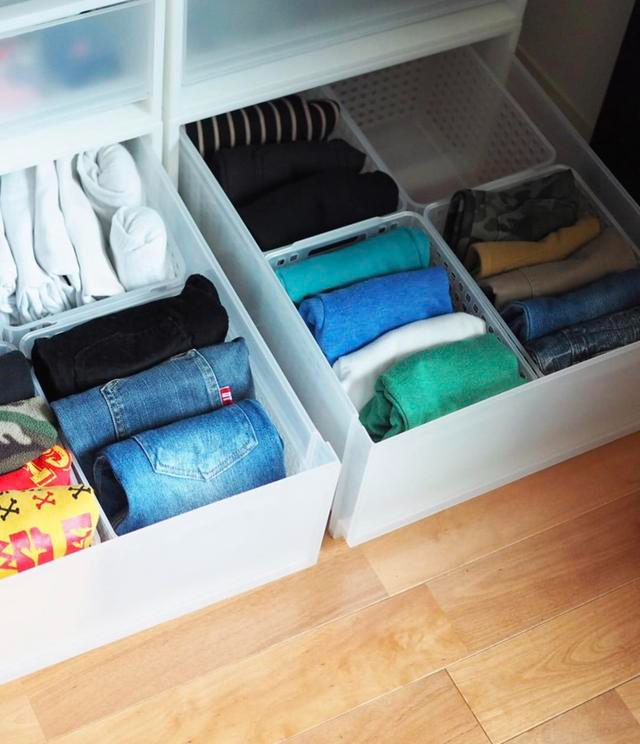
Therefore, fold all the classified clothes according to the standard of vertical storage using the "pocket method", place them upright to simulate the state of them being stored in a drawer, and measure their sizes.
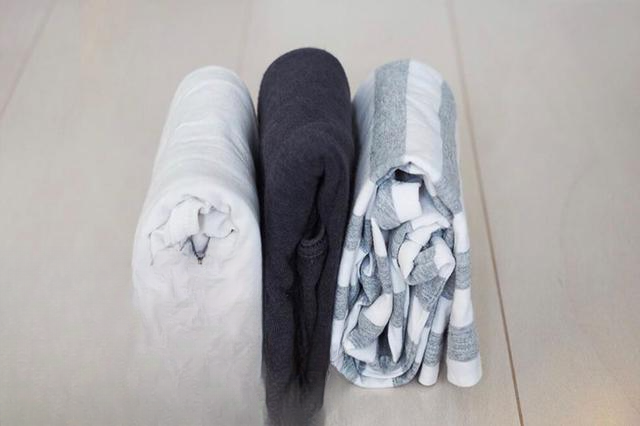
From this, I can finally determine how much capacity and how many drawers I need for each type of clothing.
Measuring the size is very important. It is directly related to your final storage result. If the measurement is incorrect or incomplete, it is very likely that the tools you bought will not be usable. You need to pay attention to the following 3 points:
1. First, you need to consider the capacity of the tool and whether it can hold your clothes. Taking the 25L wardrobe drawer in the picture as an example, we need to look at not the outer size of the drawer, but the size of the actual things inside it.
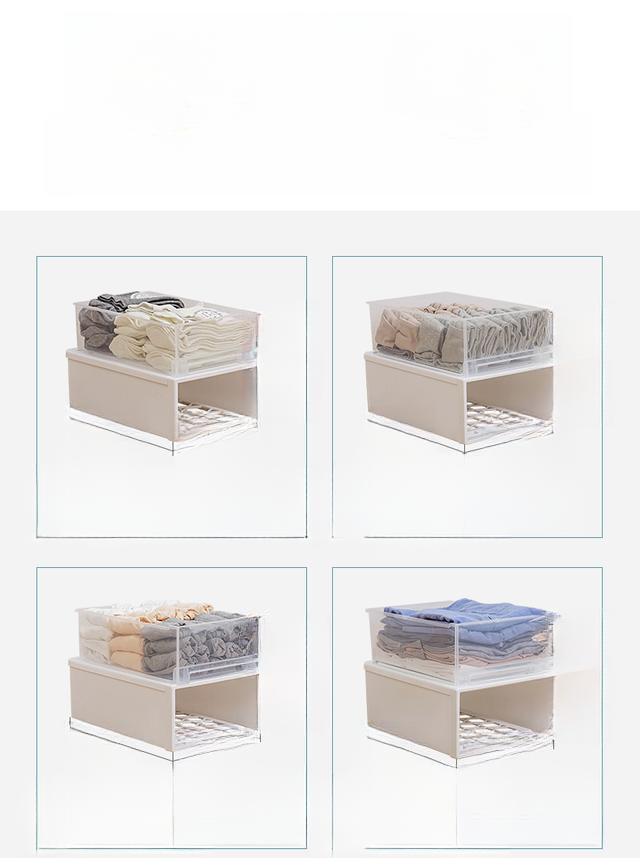
The height of a 25L drawer that can hold clothes is 15cm, not 18cm
How high are your clothes when they are folded? If they are higher than the drawer can hold, you can't close the drawer even if you put your clothes in it, which is of course not acceptable.
2. Secondly, you need to consider the size of the tool itself. Can it fit into your closet? How much space do you plan to put the drawer in? Especially for wardrobes with opening and closing doors, you must consider the size of the wardrobe door hinge when measuring, otherwise it will be embarrassing if you can't close the closet door even if you put it in.
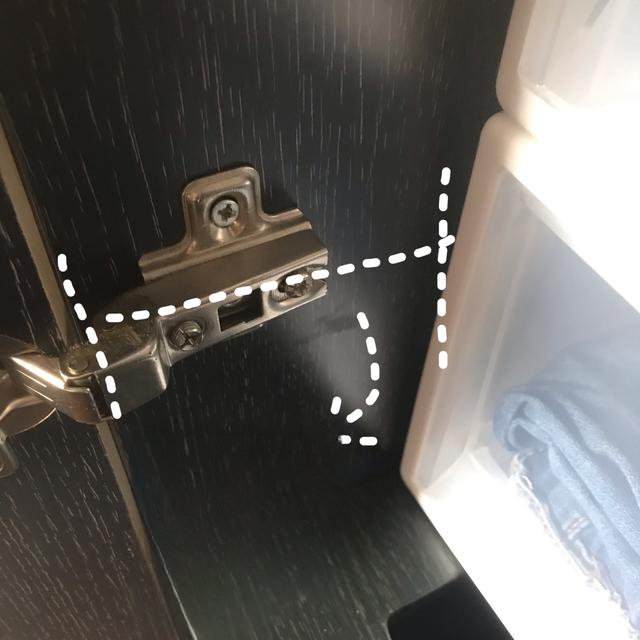
3. Finally, when measuring the size, you need to simulate the state of the clothes in the drawer. How do you want to put them? Overlapping? Standing upright? Then, in this state, what is the volume of the clothes? This also needs to be simulated, measured and considered.
Determine the size and quantity of the storage tools you need, as well as which specific clothes go in which drawer. Then you can purchase a set of tools online based on your plan.
3. Positioning, fine-tuning, and finalization
After getting the tools back, if there are no problems with your preliminary work and measurements, you only need to put the folded clothes in one by one, and then place them in the wardrobe space that was divided at the beginning according to the weight of the clothes and your living habits, and this matter is almost done.

Later, during the use process, you may make some fine adjustments according to your living habits, and these tools will gradually be integrated into your life, bringing long-term value to your life.
This is the most basic and relatively complete process of "wardrobe storage". Of course, there are many details that I did not elaborate on, such as the details of hanging storage and how to fold pockets. If you are interested, you can follow my subsequent Weibo headlines, where I will talk about them.
What I want to say is that organization and storage are both logical things. If you ignore personal living habits, have no overall cognition, are only interested in micro issues and keep spending money to try, the organized wardrobe will easily become messy again.
So, if you have a messy wardrobe that needs to be organized, it is important to understand the correct order of organization and storage. Don't always rush to put all the clothes in to fill up the space. Take them all out now and re-examine and organize them.
Source of pictures: Some of the pictures in this article are from the Internet. Please contact us to delete them if there is any infringement.
Do you like my housework?
Everyone hopes that their home will be clean, tidy and fresh all year round, but often due to busy work, fast pace of life and huge life pressure, we cannot spend too much time and energy on housework.
Therefore, it is particularly necessary to know how to do housework simply and efficiently to achieve the highest possible cleanliness .